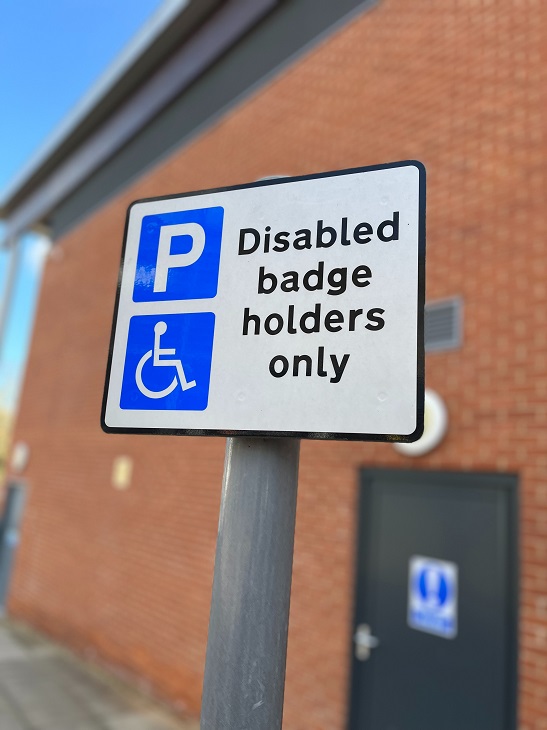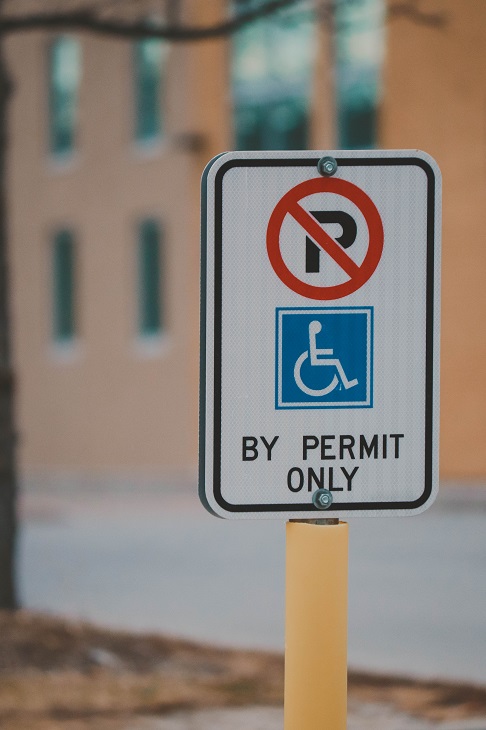The Evolution of Access: A Journey Through the History of Disabled Parking in the USA

Accessible parking spaces are a ubiquitous feature in modern urban landscapes, providing individuals with disabilities the opportunity to participate fully in society. The history of disabled parking in the United States is a testament to the ongoing struggle for equal rights and accessibility. Today we’ll be delving into the evolution of disabled parking, tracing its roots from early recognition of accessibility needs to the development of standardized regulations and ongoing efforts to improve inclusivity. From Arizona handicap parking rules to Missouri disabled parking regulations and every state in between, we’ll be looking at how disabled parking infrastructure has changed our country for the better.
Early Recognition of Accessibility Needs
The recognition of the need for accessible parking spaces can be traced back to the mid-20th century when societal attitudes towards individuals with disabilities began to shift. Prior to this period, accessibility for people with disabilities was often an afterthought, with few provisions in place to accommodate their mobility needs. As the civil rights movement gained momentum in the 1960s and 1970s, the rights of individuals with disabilities also came to the forefront, paving the way for a framework that came to govern everything from Oregon handicap parking rules to Alabama handicap parking permit application.
Legislation and Milestones
The turning point for disabled parking in the USA came with the passage of the Rehabilitation Act of 1973, which prohibited discrimination on the basis of disability in federally funded programs. Section 504 of this act laid the groundwork for addressing accessibility concerns, paving the way for the Americans with Disabilities Act (ADA) in 1990. The ADA was a landmark piece of legislation that aimed to eliminate discrimination against individuals with disabilities and ensure equal opportunities in various aspects of life, including transportation and public accommodations.
With the enactment of the ADA, the need for accessible parking spaces gained official recognition. The law mandated that public facilities and parking areas adhere to specific accessibility standards. As a result, the iconic blue and white wheelchair symbol began to appear on designated parking spaces, signifying their reserved status for individuals with disabilities. The guidelines introduced by the ADA went on to shape accessibility in every state, from handicap parking laws in Connecticut to Maine disabled parking permit requirements.
ADA Regulations and Guidelines
The ADA Standards for Accessible Design, which were first published in 1991 and later updated in 2010, provided comprehensive guidelines for the construction and alteration of facilities, including parking spaces. These standards outlined the specific requirements for accessible parking, addressing issues such as space dimensions, signage, and the proximity of spaces to accessible entrances.
One of the key aspects of these guidelines was the establishment of a ratio for accessible parking spaces based on the total number of parking spaces in a given facility. The ADA specified the minimum number of accessible spaces required, taking into account factors such as the size and type of facility.
The ADA standards for disabled parking are applicable nationwide, embedded in Illinois disabled parking regulations, New Hampshire handicap parking rules, and every state in between. Here’s a closer look at what the standards entail:
Number of Spaces
- Specify the total number of parking spaces required to be accessible based on the total parking capacity of the facility.
- Determine the minimum number of accessible spaces, including van-accessible spaces.
Location
- Accessible parking spaces should be located on the shortest accessible route to the entrance of the facility.
- Spaces should be dispersed among different parking areas if multiple lots exist.
Signage
- Use the International Symbol of Accessibility (ISA) to mark accessible parking spaces.
- Include the term “van-accessible” on signs for spaces designed for van accessibility.
Dimensions
- Define the minimum and maximum dimensions for accessible parking spaces, considering both regular and van-accessible spaces.
- Specify the width and length of the access aisle adjacent to accessible spaces.
Surface and Slope
- Ensure that accessible spaces have a firm, stable, and slip-resistant surface.
- Limit slopes in accessible spaces and access aisles to prevent barriers for individuals with mobility impairments.
Access Aisles
- Designate access aisles alongside accessible parking spaces to provide additional space for loading and unloading, particularly for wheelchair users.
- Ensure that access aisles are level and connect to an accessible route.
Identification
- Use contrasting paint or other durable marking methods to differentiate accessible parking spaces and access aisles from the surrounding pavement.
Proximity to Entrances
- Prioritize the location of accessible spaces close to building entrances, ensuring convenience for individuals with disabilities.
Vertical Clearance
- Provide adequate vertical clearance for accessible parking spaces, considering the height of vehicles, including vans equipped with wheelchair lifts.
Compliance with Local Codes
- Adhere to local building codes and ordinances in addition to the ADA Standards, as they may have additional requirements or specifications.
These standards collectively ensure that disabled parking spaces are not only available in sufficient numbers but also designed and located to facilitate accessibility for individuals with diverse mobility needs, promoting inclusivity and equal access in public and private facilities. Whether you’re using Kansas disabled parking or a handicap parking permit in Idaho, you’re guaranteed to the same rights wherever you go in the country.

Implementation Challenges and Progress
While the ADA marked a significant step forward, the implementation of accessible parking faced challenges. Enforcement of ADA regulations varied across states and municipalities, leading to inconsistencies in accessibility standards. In some cases, the lack of awareness or enforcement resulted in non-compliance, hindering the goal of providing equal access.
To address these challenges, advocacy groups, such as the American Association of People with Disabilities (AAPD) and the Disability Rights Education and Defense Fund (DREDF), played a crucial role in raising awareness and promoting adherence to ADA standards. These advocacy organizations have been at the forefront of promoting awareness, ensuring compliance, and advocating for the rights of individuals with disabilities to access public spaces seamlessly.
AAPD, as one of the largest cross-disability organizations in the United States, has engaged in extensive outreach and education campaigns to inform the public, businesses, and policymakers about the ADA’s provisions, including those pertaining to disabled parking. They have worked to raise awareness about the importance of accessible parking spaces and have collaborated with stakeholders to foster a culture of compliance.
Similarly, DREDF, known for its commitment to advancing the civil and human rights of people with disabilities, has actively engaged in legal advocacy to address challenges in the implementation of ADA guidelines for disabled parking. This includes taking legal action against entities that fail to comply with ADA standards, particularly regarding the accessibility of parking facilities. DREDF has played a pivotal role in litigating cases that have set legal precedents, ensuring that the ADA’s parking provisions are enforced and that individuals with disabilities can enjoy equal access to parking spaces.
Both organizations have also advocated for updates and improvements to ADA guidelines to reflect evolving needs and technological advancements. They have worked closely with policymakers and legislators to push for amendments and additions to the ADA that address emerging challenges in the realm of disabled parking. Furthermore, these groups have offered resources and assistance to individuals facing discrimination or barriers related to parking accessibility, empowering them to assert their rights and seek redress when necessary.
International Symbol of Access
The iconic International Symbol of Access, commonly known as the wheelchair symbol, has become synonymous with disabled parking spaces throughout the United States. From Colorado handicap parking laws to handicap parking laws in Iowa and everywhere else in the country, this symbol is legally required on every disabled parking space.
Designed by Danish graphic designer Susanne Koefoed in 1968, the symbol underwent modifications over the years to adopt a more dynamic and inclusive representation of individuals with disabilities, and has come to be recognized worldwide as a symbol of accessibility. In recent years, there has been a push to update the symbol to better reflect the diversity of the disability community. Some argue that a more modern and active depiction would challenge stereotypes and promote a more inclusive understanding of disability.
Innovations in Accessible Parking
Since the enactment of the ADA, there have been notable innovations in accessible parking that reflect a commitment to enhancing the mobility and independence of individuals with disabilities. One significant advancement has been the integration of technology to improve accessibility. Smart parking solutions and mobile apps now provide real-time information about the availability of accessible parking spaces, helping individuals plan their trips and navigate parking facilities more efficiently.
Additionally, the advent of electric vehicles (EVs) has led to innovations in accessible EV charging stations, ensuring that individuals with disabilities who use electric mobility devices can conveniently charge their vehicles.
There has also been a growing emphasis on inclusive design, with some parking facilities implementing features such as wider access aisles, sensory guidance systems, and universally designed signage to cater to a broader range of disabilities. The use of materials and surfaces that are more navigable for individuals with visual or mobility impairments has also become more prevalent.
As society becomes more attuned to the diverse needs of individuals with disabilities, ongoing innovations in accessible parking continue to reinforce the principles of the ADA, aiming to create a more inclusive and accessible built environment for everyone.

The History of Disabled Parking Permits
The history of disabled parking permits in the United States is a story of progress in recognizing and addressing the mobility needs of individuals with disabilities. The journey began with the passage of the Americans with Disabilities Act (ADA) in 1990, a groundbreaking legislation that aimed to eliminate discrimination against people with disabilities and ensure equal access to public facilities. As a crucial component of the ADA, provisions were made for accessible parking spaces, but it was not until the mid-1990s that the use of disabled parking permits gained significant traction.
In 1994, the U.S. Department of Transportation issued regulations establishing the design specifications for disabled parking placards and plates. These regulations standardized the appearance of these permits and set guidelines for their issuance by state and local authorities. The permits were designed to be easily recognizable, typically displaying the International Symbol of Access and other relevant information.
Over the years, states have implemented their own programs for issuing disabled parking permits, leading to variations in application processes, eligibility criteria, and permit durations. The process for Louisiana handicap parking permit application will differ from that of obtaining a handicap parking permit in Alaska; Delaware handicap parking rules and New Mexico handicap parking laws will differ when it comes to their permits; and so on.
Despite these differences, most states typically require individuals to provide documentation from a medical professional to prove their eligibility for a disabled parking permit, and permits are often issued on a temporary or permanent basis depending on the nature and duration of the disability.
One significant development in recent years is the integration of technology into the management of disabled parking permits. Many states now offer online applications and renewal processes, making it more convenient for individuals with disabilities to obtain and maintain their permits. Additionally, technology has been leveraged to create apps and websites that provide real-time information about the location of accessible parking spaces, enhancing the overall accessibility experience for people with disabilities.
Despite these advancements, challenges remain, including issues of misuse and abuse of disabled parking permits. Many states have implemented stricter enforcement measures and penalties to curb fraudulent activities, emphasizing the importance of preserving these spaces for those who genuinely need them.
Ongoing Challenges and Future Directions for Disabled Parking
Despite the progress made in the realm of disabled parking, challenges persist. Issues such as enforcement, insufficient accessible spaces in certain areas, and the need for continued education on disability awareness remain. Additionally, as cities evolve and transportation systems change, there is a constant need to adapt parking infrastructure to meet the evolving needs of individuals with disabilities.
Looking ahead, the future of disabled parking in the USA involves a commitment to ongoing improvements. Collaboration between government agencies, advocacy groups, and the private sector is essential to address existing challenges and explore innovative solutions. This includes harnessing the power of technology to enhance accessibility and implementing universal design principles in urban planning and infrastructure development.
***
The history of disabled parking in the USA is a testament to the progress made in recognizing and addressing the accessibility needs of individuals with disabilities. From the early days of sporadic recognition to the enactment of comprehensive legislation like the ADA, the journey has been one of evolution and advocacy.
While there have been significant strides, the ongoing commitment to inclusivity and equal access remains crucial. As society continues to evolve, so too must our efforts to ensure that accessible parking is not just a legal requirement but a tangible reality for individuals with disabilities. Through continued collaboration, awareness, and innovation, the USA can build on its history of progress and create a future where accessibility is a fundamental aspect of urban planning and design.
Looking for more insight into disabled parking in the US? Whether you need a handicap parking permit in Mississippi or a Nevada handicap parking permit application, more info on New York handicap parking permit renewal or the process for obtaining an Oklahoma disabled parking permit, you’ve come to the right place. Explore our site for all you need to know!
Featured image by Jack S on Pexels